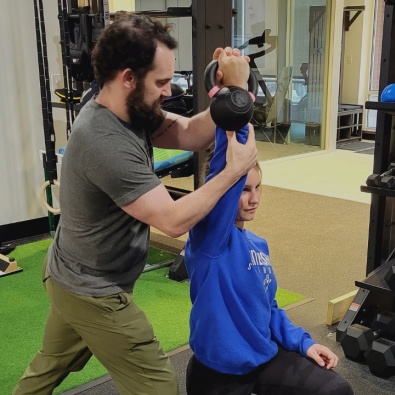Shoulder Stability & Reducing Your Risk For Injury
Shoulder stability refers to the ability of the shoulder joint to maintain its proper position and function effectively during movement. The shoulder is a highly mobile joint, which allows for a wide range of motion but can also make it susceptible to instability and injury. To maintain stability, the shoulder relies on the coordinated action of various structures, including muscles, ligaments, tendons, and the joint capsule.
There are two primary types of shoulder stability: static stability and dynamic stability.
-
Static Stability: This refers to the inherent stability provided by the bony structure and ligaments of the shoulder joint. The bony socket of the shoulder, called the glenoid, is relatively shallow, which provides less inherent stability compared to other joints like the hip. The labrum, a ring of cartilage around the glenoid, deepens the socket and contributes to static stability.
-
Dynamic Stability: This type of stability is achieved through the dynamic action of muscles that surround the shoulder joint. The rotator cuff muscles (supraspinatus, infraspinatus, teres minor, and subscapularis) play a crucial role in stabilizing the shoulder by keeping the head of the humerus (upper arm bone) centered within the glenoid socket during movement.
Common factors that can lead to shoulder instability include:
- Weakness or imbalances in the rotator cuff muscles and the muscles around the shoulder blade (scapula).
- Overuse or repetitive motions that strain the shoulder joint.
- Traumatic injuries, such as dislocations or subluxations (partial dislocations).
- Genetic factors or underlying connective tissue disorders that affect ligament strength.
- Poor posture, which can lead to muscular imbalances and altered joint mechanics.
To improve shoulder stability and reduce the risk of injury, consider the following:
-
Strength Training: Focus on exercises that target the rotator cuff muscles, deltoids, and scapular stabilizers. This can help improve overall shoulder strength and stability.
-
Range of Motion Exercises: Perform regular stretches to maintain adequate shoulder flexibility and prevent stiffness.
-
Proper Technique: Use proper form when engaging in any physical activity or weightlifting to avoid putting excessive stress on the shoulder joint.
-
Posture Awareness: Be mindful of your posture during daily activities, as poor posture can contribute to shoulder instability.
-
Avoid Overuse: Allow your shoulders to rest and recover after intense or repetitive activities.
-
Seek Professional Advice: If you have concerns about shoulder stability or are experiencing pain or discomfort, consult a qualified healthcare professional or a physical therapist. They can assess your condition and provide personalized exercises and guidance.
For more information on shoulder stability and how to perform shoulder stability exercises, visit us on the (se)® LAB App! You will get the latest research and tools for managing Stress, maintaining healthy connective tissue, pain management, corrective exercises, and so much more!

